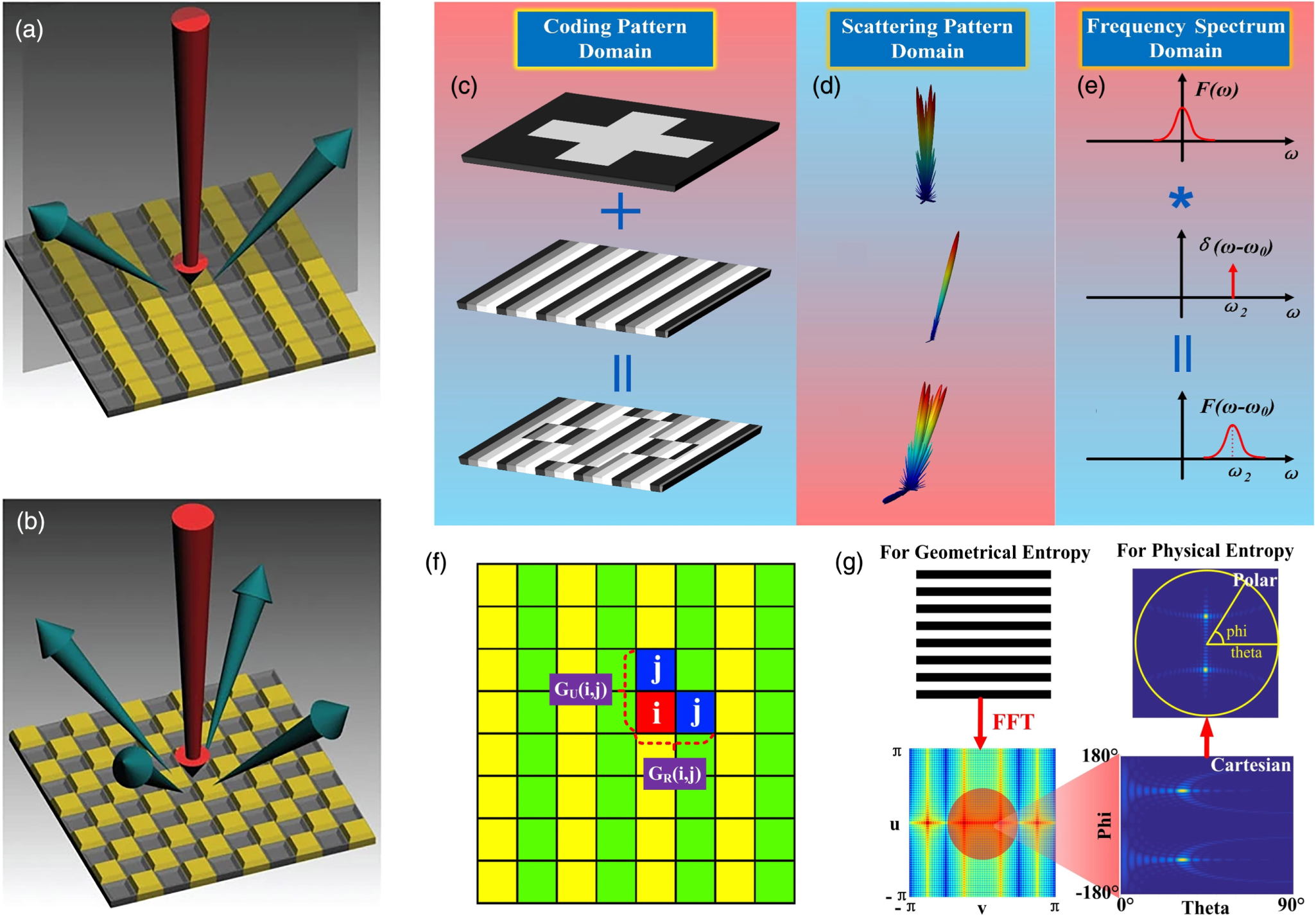Metasurfaces are transforming the world of optics innovation, with groundbreaking applications in consumer electronics. This cutting-edge technology utilizes a series of tiny pillars on a millimeter-thin wafer, allowing devices to manipulate light in unprecedented ways, thereby serving as a miniature lens solution. Pioneered through the groundbreaking work of Rob Devlin and his team at Metalenz, these metasurfaces promise to revolutionize how cameras and sensors function in personal electronics. By focusing on mini-lens technology, Metalenz has made strides in producing millions of these devices to meet rising market demand. As polarization technology advances, the potential for further applications underscores the significance of metasurfaces in modern optical design and engineering.
Flat optical surfaces, often referred to as metasurfaces, are leading a revolution in the optics landscape, bringing about a wave of innovation in image processing and light manipulation. These ultra-thin structures harness the power of nanotechnology to alter light in ways traditional lenses cannot, which impacts a variety of devices, from smartphones to augmented reality systems. Developed amidst academic research, such as the pioneering projects led by Rob Devlin, these flat lenses are set to redefine consumer electronics design. Their capacity to embed complex functionalities into compact modules has made them indispensable for future optical systems. As the landscape of optical technology shifts, the emergence of these advanced surfaces marks a pivotal moment in engineering, enhancing both performance and accessibility across the board.
The Breakthrough of Metasurfaces in Modern Optics
Metasurfaces represent a revolutionary advance in optical technology, transforming traditional lens design. Unlike conventional optics that depend on curved glass or plastic materials to shape light, metasurfaces utilize a series of microscopically engineered structures to manipulate light with unmatched precision. This innovative approach enables the production of thinner, lighter lenses that significantly improve the performance and versatility of consumer electronics. With the integration of these mini-lens technologies into devices such as smartphones and tablets, the demand for compact and efficient optics is surging, indicating a substantial shift in the industry.
Rob Devlin’s leadership at Metalenz has been critical to the successful commercialization of these metasurfaces. By focusing on optimizing production methods and enhancing the device performance, Metalenz is setting a new standard for how optical components can be manufactured and utilized. The ability of metasurfaces to offer advanced functionalities, such as depth perception for 3D sensing and potential applications in augmented reality, illustrates their transformative impact on modern optics. The collaboration of interdisciplinary research, notably in the Capasso lab, underscores the importance of academic foundations in driving innovations that reshape entire industries.
Mini-Lens Technology: Redefining Consumer Electronics
The advent of mini-lens technology has significantly boosted the capabilities of consumer electronics, providing manufacturers with the tools to design sleeker and more efficient devices. The miniaturization of optics not only reduces the physical space required for components but also enhances performance by allowing for richer features and improved functionality within smartphones, tablets, and other gadgets. This has become increasingly essential in a market where consumers demand more from their devices, driving an urgent need for innovation and smarter design solutions.
Moreover, Metalenz’s advancements in mini-lens technology, particularly their partnership with STMicroelectronics for the FlightSense module, showcase the practical applications of this innovation. By embedding metasurfaces in distance measurement systems, the improved precision and performance bolster capabilities such as facial recognition and augmented reality, thus enriching the user experience. As the industry continues to chase the latest trends in gadget functionalities, the role of cutting-edge optics innovations, like those from Metalenz, will undoubtedly play a pivotal part.
Rob Devlin and the Journey of Metalenz
The journey of Metalenz reflects the vibrant intersection of academic research and entrepreneurial spirit. Led by Rob Devlin, whose foundational work in mini-lens technology began at Harvard, the startup has quickly evolved from a university initiative to a major player in the optics industry. This transformation is not merely about commercial success; it’s a testament to the practical application of scientific research in creating products that resonate with market demands. Metalenz’s meteoric rise illustrates how innovative thinking, when combined with solid scientific groundwork, can lead to a product capable of disrupting entire sectors.
Devlin’s strategic vision for Metalenz focuses on scaling the production of metasurfaces while simultaneously exploring new functionalities, such as the Polar ID technology. His insights into the possibilities afforded by utilizing light polarization demonstrate the potential for extensive applications beyond traditional optics. As the market grows more competitive, driven by advancements in polarization technology and mini-lens deployments, Metalenz’s commitment to innovation will be essential in maintaining its edge and continuing to lead in the optics revolution.
The Future of Optics: Innovations and Challenges
The future of optics lies in the continued advancement of technologies like metasurfaces, which promise unprecedented capabilities. As devices become increasingly integrated into our daily lives, the demand for smaller, more efficient lenses that do not compromise on performance will persist. Innovations such as Rob Devlin’s Polar ID, which employs light polarization for enhanced security applications, indicate a trend towards multifunctionality in optical devices. This blend of imaging and sensing capabilities is poised to open new avenues in consumer electronics, healthcare, and environmental monitoring.
However, with these advancements come challenges. The growth of metasurface technology will necessitate rigorous testing and standardization to ensure reliability and performance across various applications. Moreover, as competition intensifies with other companies aspiring to enter this frontier of optics innovation, maintaining a lead in research and production efficiency will be critical. As exemplified in the partnership between academic institutions and startups like Metalenz, collaboration will play a crucial role in overcoming these challenges, fostering an environment where groundbreaking ideas can flourish.
Polarization Technology: A Game Changer in Optical Security
Polarization technology is emerging as a transformative force in enhancing security features in consumer devices. Traditional methods of security, often reliant on physical traits, face limitations in effectiveness and scalability. The Polar ID developed by Metalenz illustrates how leveraging light polarization can provide an additional layer of authentication for smartphones, allowing for more secure and efficient user identification processes. This technology could revolutionize personal security by ensuring that even advanced counterfeit attempts can be thwarted through unique polarization signatures.
Moreover, the implications of polarization extend beyond security into various fields, including health diagnostics. For instance, the ability to distinguish between healthy and atypical skin using polarization techniques demonstrates the remarkable potential of metasurfaces to impact public health positively. As awareness and adoption of polarization technologies grow, it is likely consumers will see its integration across a wide range of devices, further embedding the importance of optics innovation into everyday life.
From Research Lab to Market Success: The Role of University Startups
The transition of innovations from research labs to market-ready products is a crucial factor in fostering technological advancement. University startups, such as Metalenz, exemplify the potential of academic research to disrupt existing industries by introducing groundbreaking technologies. The collaboration between researchers and business-minded individuals bridges the gap between theoretical research and commercial viability, forging pathways for innovations that can meet consumer demands, as illustrated by the work of Rob Devlin and the Capasso lab at Harvard.
By nurturing a culture of entrepreneurship within academia, universities can effectively contribute to the economy, driving job creation and advancing technology sectors. This holistic approach not only supports the transition of ideas into viable products but also reinforces the connection between science and societal progress. As proven by Metalenz’s success in popularizing metasurfaces, the impact of university research on industry transformation cannot be overstated.
Harnessing LSI for Enhanced Search Visibility in Technology
Employing Latent Semantic Indexing (LSI) strategies can significantly magnify the SEO potential of technology-oriented content. By integrating contextually relevant keywords such as ‘optics innovation,’ ‘polarization technology,’ and ‘mini-lens technology’ alongside primary topics like metasurfaces, content creators can ensure their material is not only relevant but also visible to search engines. Effective use of LSI helps to connect disparate subjects with common themes, driving targeted traffic and increasing audience engagement.
For instance, when discussing the advances in consumer electronics due to these optical innovations, weaving in LSI keywords may enhance content discoverability. This could allow potential users and industry stakeholders to find insightful discussions regarding the pioneering contributions of figures like Rob Devlin and the exciting developments in the field of optics more easily, ultimately driving interest and investment in new technologies and applications.
Addressing Competition and Future Challenges in Optical Technology
As with any burgeoning industry, the realm of optical technology faces increasing competition. Companies eager to capitalize on the innovations brought forth by pioneers such as Rob Devlin and institutions like Harvard are rapidly emerging. This competition underscores the importance of continual innovation and differentiation; to remain at the forefront, established players like Metalenz must consistently evolve their offerings, staying ahead of market trends while harnessing cutting-edge research.
Future challenges also lie in the mass production and scalability of new technologies derived from metasurfaces. Ensuring that advancements, particularly in polarization technology, can be manufactured efficiently without compromising quality will be essential for widespread adoption in consumer electronics. By proactively addressing these challenges from both a production and marketing standpoint, companies can build resilience in a competitive landscape while pushing the boundaries of optical technology innovation.
Conclusion: The Significance of Innovation in Optical Technology
The rise of metasurfaces and mini-lens technology signifies a pivotal moment in the landscape of optical technology. By distilling complex optical functions into compact, scalable solutions, innovations from organizations like Metalenz are paving the way for a future where enhanced imaging and sensing capabilities become standard in consumer electronics. The marriage of scientific inquiry and entrepreneurial spirit exemplified in the journey of Rob Devlin and his team emphasizes the potential for transformative changes in this domain.
As technology continues to evolve, so does the significance of fostering an environment that encourages innovation and collaboration across fields. The success of companies like Metalenz reinforces the idea that the interplay between academia and industry can yield products that not only meet consumer needs but also contribute to shaping the future of technology as a whole.
Frequently Asked Questions
What are metasurfaces and how do they relate to mini-lens technology?
Metasurfaces are engineered materials designed to manipulate light in advanced ways, using tiny structures that can bend and focus light similar to traditional lenses. Mini-lens technology, developed by Metalenz, utilizes these metasurfaces to create ultra-thin lenses that are smaller, lighter, and more cost-effective than conventional optics, making it ideal for modern consumer electronics.
How has Rob Devlin’s work on metasurfaces transformed consumer electronics?
Rob Devlin’s innovations in metasurfaces have led to the production of millions of mini-lenses that are currently used in various consumer electronic devices, such as smartphones and tablets. His startup, Metalenz, has successfully integrated these devices into popular products like the iPad and Samsung Galaxy S23 Ultra, significantly enhancing their optical capabilities.
What is the significance of polarization technology in metasurfaces?
Polarization technology plays a crucial role in metasurfaces as it enables advanced functionalities such as enhanced security features in consumer electronics. Metalenz is developing Polar ID, a polarization metasurface that improves facial recognition systems by detecting the unique polarization signature of users, providing an extra layer of security at a fraction of the size and cost of traditional systems.
How do metasurfaces compare to traditional lens manufacturing?
Metasurfaces disrupt traditional lens manufacturing by offering a thinner, lighter alternative to bulky glass or plastic lenses. They can be mass-produced at a lower cost while maintaining or enhancing optical performance, making them suitable for the ever-evolving designs in consumer electronics where space is a limitation.
What potential applications do metasurfaces have beyond consumer electronics?
Beyond consumer electronics, metasurfaces have promising applications in fields like healthcare, where they can aid in detecting skin cancer through unique polarization signatures, and environmental monitoring, such as air quality assessment. Their ability to condense complex functionalities into smaller modules opens up exciting possibilities across various industries.
What challenges does Metalenz face in the metasurface market?
One of the main challenges Metalenz faces is competition from other companies developing similar metasurface technologies. With many competitors working diligently to catch up, Metalenz aims to stay ahead by continually improving their products and leveraging unique capabilities of metasurfaces to create innovative applications.
How did the development of metasurfaces originate at Harvard’s Capasso Lab?
The development of metasurfaces originated in Harvard’s Capasso Lab around 2007-2008, where researchers, including Rob Devlin, worked on pioneering optical properties at the nanostructural level. By 2012, significant breakthroughs led to the creation of the first metalens, marking a shift towards practical applications in consumer technology.
What are the advantages of using metasurfaces in 3D sensing applications?
Metasurfaces are particularly advantageous in 3D sensing applications as they can emit and detect near-infrared light with high precision, enabling functionalities such as facial recognition and 3D room mapping. Their compact size allows for integration into small devices, enhancing the overall performance of tech products.
| Key Point | Details |
|---|---|
| Innovation Background | Rob Devlin developed a mini-lens during his Ph.D. at Harvard, designed to focus light using a flat wafer with tiny pillars. |
| Company Formation | Metalenz was founded in 2016, now producing 100 million metasurfaces for consumer electronics. |
| Industry Disruption | Metasurfaces are set to replace traditional lenses made from curved glass or plastic, enabling more compact device designs. |
| Notable Applications | Integrated into devices like iPad, Samsung Galaxy S23 Ultra, and Google Pixel 8 Pro for depth sensing and 3D mapping. |
| Future Prospects | Development of Polar ID technology will enhance smartphone security and reduce costs through miniaturization of polarization cameras. |
| Market Potential | The technology addresses the need for smaller, high-performance optical components in tech devices, catering to increased consumer demand. |
| Research Foundation | Capasso’s lab at Harvard laid the groundwork for metasurfaces, with research dating back to 2008, transitioning quickly into marketable products. |
| Ongoing Competition | Metalenz aims to stay ahead in innovation while competitors attempt to catch up with similar technology. |
Summary
Metasurfaces represent a significant advancement in optics, leading to innovative solutions that disrupt traditional lens manufacturing. Developed from cutting-edge research at Harvard, these mini-lenses can enhance device functionalities while enabling a compact design. Companies like Metalenz are at the forefront of this technology, with a vision for widespread application in consumer electronics, setting new standards for optical performance and integration.



